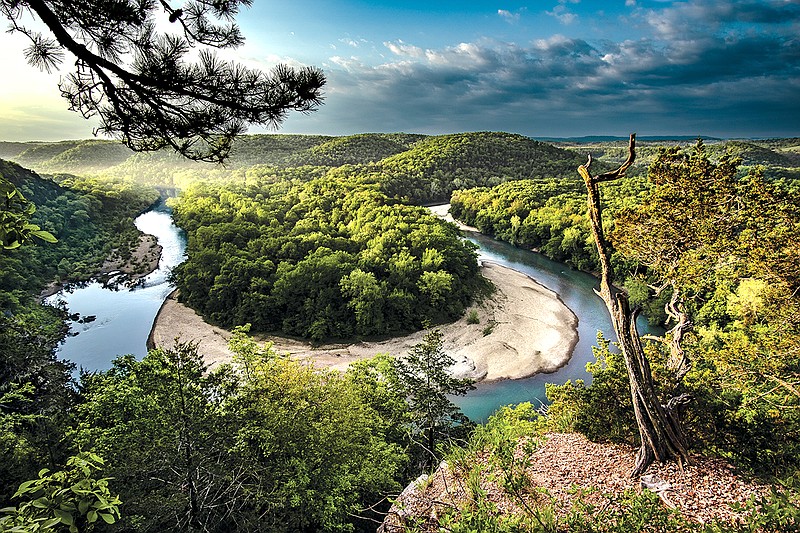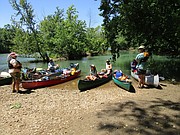The dawning of spring means change. Wildflowers burst forth. Birds chirp like it is the first day of their life. The days warm, bookended by still-cool nights. The smell of cut grass hangs in the air, a sign of the life that is returning.
Forget the cut-grass stuff.
Instead, let's think about a lazy, hazy day of drifting down a nearly crystal clear river in Arkansas.
The Buffalo River is America's first National River and one of the few remaining undammed rivers in the Lower 48, flowing freely for 135 miles. Divided into three sections - upper, middle and lower - the river meanders between several bluffs that tower up to 500 feet inside Arkansas Ozark Plateau and offers a range of opportunities for multi-day paddling trips.
Pro tip: Be forewarned, the water of this spring-fed river is cold. Some will say the water gets warmer the longer you stay in it. Don't fall for that.
The beauty of the Buffalo is that it can be paddled year-round, though ultimately, the timing and length of trips depend on water level.
While the Buffalo comprises 131 miles of runnable river, most trips are 125 miles or less due to the lower water on the upper end of the river. Trips going the distance begin at Ponca and end at Buffalo City, but with more than a dozen take-out options available, paddlers can vary the length of their trip as needed.
Along the way, they can stay at any one of the 11 National Park Service's established riverside campgrounds (for a fee), with some offering restrooms, showers, electricity and potable water. Or, for the more adventurous, camping is allowed all along the river on small sandy beaches.
Recommended reading
Check out the Ozark Society’s “The Buffalo River Canoeing Guide” to learn more about paddling America’s first National River.
Pro tip: Make sure you have a good air mattress or sleeping pad, as the rocks seem to get bigger during the night.
The primitive sites are free and have only one rule: Leave no trace.
Though, there is one big safety precaution to consider.
As the river is bound by bluffs, in many locations, paddlers need to make sure they have an egress opposite the bluffs in case of rising high water. This may be a dirt road or a nearby field with higher elevation.
Pro tip: Located at mile 99.2 on the Buffalo, paddlers can visit Gilbert, Arkansas. The city is the smallest in the state with a 2010 Census population of 28. There, paddlers can visit the Gilbert General Store, sure to be a trip highlight.
Since 1970, Tennessee Valley Canoe Club members have made an annual trip to the Buffalo - though they haven't always gotten the chance to paddle.
Just ask TVCC member Pat Carver, whose first two trips down the Buffalo were canceled due to high water.
Her third time was the charm, as they say, but the possibility of high water after heavy rains always has to be a concern.
"It had just rained and [friend and fellow TVCC member] Buddy Wise was sure it was perfect. With some convincing, we put on, and it was perfect!" Carver says. "The trip was easy. The campsites were great and I was able to fully enjoy the experience. The bluffs were spectacular. We spent six nights on the river."
"What has drawn our family to this river is its immense beauty with its generally clear water and majestic landscape," adds Uwe Zitzow, another long-term TVCC member. "It is also being able to camp by the river at a completely remote place and being with congenial people who share the same passion about wildlife as we do and who enjoy having fun."
More on water levels
As stated, the river is subject to flooding. For any alerts, river closures and a map of the Buffalo River, visit nps.gov/buff/planyourvisit/maps.htm.The American Whitewater site shows the river broken down into 13 sections, with the upper two usually showing the water level too low for paddling. Additional information about the river’s water level can be found at americanwhitewater.org.

